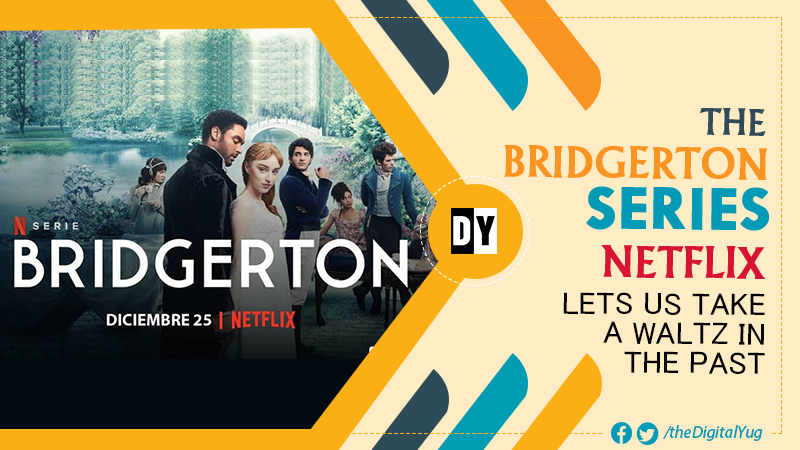
Ask any little girl about her favorite story. Chances are, it has something to do with princes and princesses. The obsession with the past is not exactly restricted to children; adults are guilty of it too. To date, no celebrity has matched the aura of history and intrigue as the British royalty; indeed, our media is littered with tidbits about the current British Queen and her family.
Monarchy is a tradition of the past for most of the world, but we cannot seem to shake off the nostalgia and fascination for the period of Kings and Queens and Dukes and Duchesses.
The past settles down snugly on our TV screens.The longing for a time when we weren’t even born is not an isolated phenomenon. The collective desire for stories of the past has materialized into countless period dramas and historical movies. The costumes and customs, the manners in which people spoke to each other, and the lost romanticism of that era are attractive to all, and it popularizes period pieces like Downton Abbey (2010-2015), Pride and Prejudice (1995 miniseries), Jane Eyre (2011), etc. Judging from the ratings, the love for the past has no signs of fizzling out soon.
Recently, a certain ShondaRhimes production has taken the world by storm, and Netflix has hit the jackpot. Almost 82 million households (if we trust the Netflix data) have tuned in to watch a fantastical love story of a soapy period drama. The Bridgerton series is the talk of the town, turning itself into Netflix’s biggest hit!
Time to tighten your corset; you are invited for a ball!It took only one season, comprising eight episodes, to hypnotize audiences and make them root for a couple living in the 1800s. It will relieve the fans to know that more seasons are sure to come, as the creators have based Bridgerton on a series of novels by Julia Quinn. The show introduces us to the influential Bridgerton family and their quest to find their eldest daughter Daphne Bridgerton (Phoebe Dynevor), a suitable husband. The answer appears as the dashing Duke of Hastings, Simon Basset (Regé-Jean Page), and they start as pretend-lovers and end up being married.
The predictable plot of friends-to-lovers doesn’t make the series any less entertaining; the dazzling drama, beautiful costumes, exciting suspense of Lady Whistledown, and the modern retelling of London's Regency era make up for it. The charming dance sequences and shimmering ball gowns offered the audience a chance to escape from the lockdown monotony, just when they direly needed it.
Bridgerton is colorful indeed, in more ways than oneAbove all, the most wonderful and praiseworthy feature of the show is not the comedic scenes, or the chemistry between the leads, or even the classical rendition of pop songs. The striking fact is about the cast itself.
Creators, who make historical accuracy a priority, keep people of colour absent from their period dramas of the lush Regency era. Even if they are present, their presence would strictly be confined to roles of the domestic help or people with tragic backstories. Most directors find nothing wrong in this, insisting on the “correct” way of doing it, but we imagine ShondaRhimes shaking her head at them.
The inclusive world of ShondaRhimesThe Bridgerton series celebrates a diverse cast, with people of colour occupying positions of authority; with little fuss over historical backdrops of slavery and abuse. The viewers can easily brush off the objections about the "non-white" cast, as it is exceedingly apparent that Bridgerton is not a series that focuses on racial identity or factual accuracy. The essence of the show is delightful gossip and scandal; and the pressure of finding a suitable match (preferably someone worth being in love with).
The only recognition about the difference in skin colour and its implications happens in just one scene in episode 4 when Lady Danbury (a close friend of Simon's mother) lectures the disgruntled Duke on the power of love. It was the marriage between the King and Queen Charlotte (a black woman); that erased the boundaries and created equality between the two "separate" societies. The cynical Duke remains uninspired when he correctly assumes that such power is unstable at the best of times.
Aside from those few minutes, the Black, Asian, and minority characters in Bridgerton exist along with their white counterparts unassumingly, navigating society without the burden of oppression.
Not everything is fluffy in “Bridgerton” dreamlandThis soapy drama about ball dances and suitors is not without faults. The mistake in Bridgerton is not an inconsequential or forgettable one; it is enough to cast a blemish. The concept of consent is represented poorly, and in one scene, our heroine decidedly ignores the wishes of her sexual partner and goes through the act to get what she wants. This scene of marital rape has been fueling the criticism of many, and rightfully so.
The disappointing lack of scrutiny or even recognition of the problematic scene in Bridgerton script, skipping it, deeming the violation unimportant, is extremely uncomfortable for the viewers.
Much of the burden of the consent rests on the boys, as most of the sexual assault offenders are male. But that doesn't erase the incidences of women being the assaulters; guardians should teach consent to both boys and girls in their adolescence. As per the context of Bridgerton, the issues of consent were not explored as they should have been; the plot races ahead to reach the promised conclusion of a happy ending.
To watch or not to watchThis show is something everyone is talking about; missing it may cause mild cases of FOMO. Much of the arguments about historical romances as a serious genre, opinions about nonconsensual sex, or feminist views won’t make much sense if one deprives oneself of this delicious treat. Everyone deserves the silly romantic escapisms of the Regency era once in a while.
Latest Updates from around the world
Most read stories, topics, and videos
Latest Updates from around the world